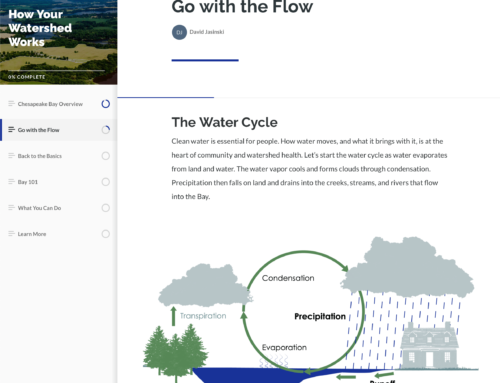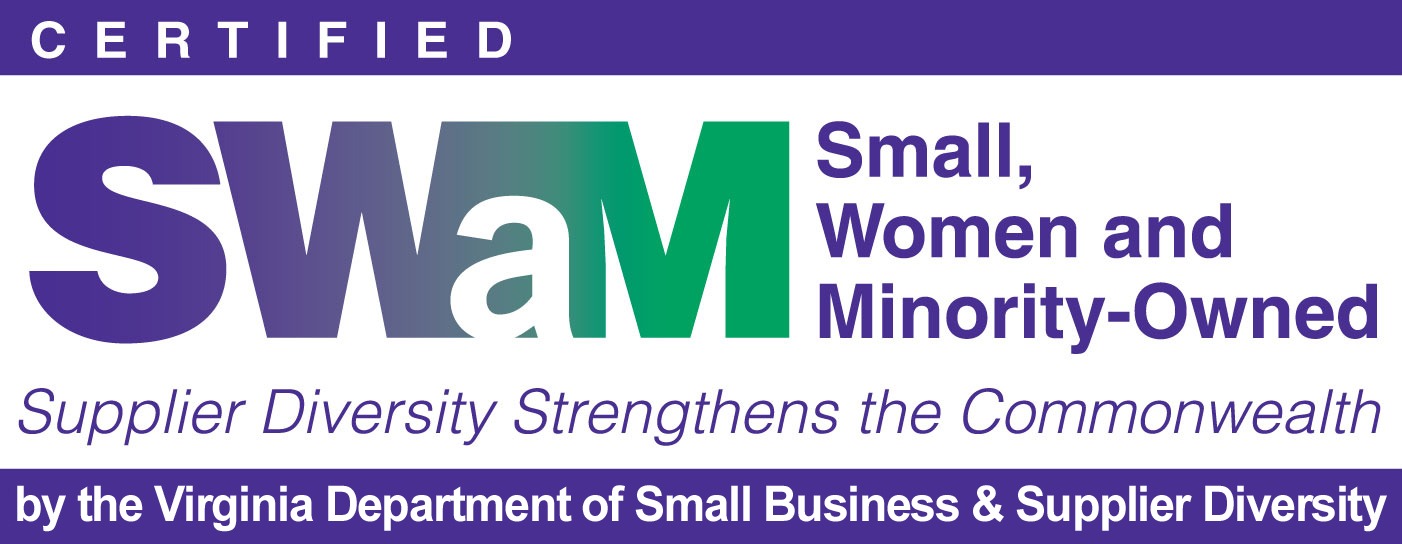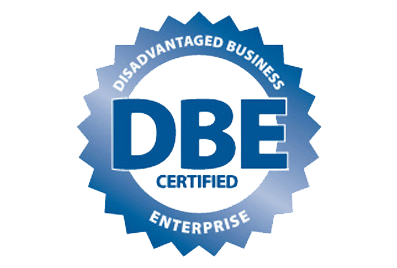[vc_row][vc_column][vc_column_text]You can’t change behaviors without a successful engagement strategy. It’s absolutely essential to progress. Engaging audiences is the first step towards building trust, having them understand what you are talking about, and ultimately, having them take action.
Here are three tips on how to better connect with your audiences. We’ve summarized these from a recent presentation that Dave Jasinski gave at the Virginia Citizens for Water Quality Summit, held at Randolph Macon College and hosted by the Alliance for the Chesapeake Bay.[/vc_column_text][/vc_column][/vc_row][vc_row][vc_column width=”1/3″][vc_single_image image=”2198″ img_size=”medium” css_animation=”fadeIn”][/vc_column][vc_column width=”2/3″][vc_column_text]Tip 1 – There is no one and done because you need to tailor messages to different audiences
While you likely have one, succinct mission statement, to accomplish that mission you’ll need a variety of messages to resonate across your varied audiences. For example, if your mission includes restoring water quality in a specific geography, think about all the reasons that clean water is important to your audiences.
Just talking about “clean water” may not capture someone’s attention the way having them visualize healthy fish populations or watching their children swim in that area would. A business owner may care about how they can play a role in making their community healthier for themselves, their employees, and recruiting new staff. A land owner may want to know about tax credits, funding programs, technical assistance for ways they can improve water quality.
Think through all the messages you might need to reach your many audiences. The next step, that we’ll talk more about in Tip 2, is to then to identify specific benefits that are important to those you are trying to reach, personalize your message, and use powerful words (e.g., you, because, free, proven, etc.) that have been proven to convert.[/vc_column_text][/vc_column][/vc_row][vc_row][vc_column width=”1/3″][vc_single_image image=”2201″ img_size=”medium” css_animation=”fadeIn”][/vc_column][vc_column width=”2/3″][vc_column_text]Tip 2 – Change-making communication requires that you meet your audiences where they are
In order to engage with your audiences, you need to truly understand them and their motivations. These different sectors of the population may believe in your mission and goals but may have different reasons for taking action to help you achieve them. For example, an environmental group may have a goal of restoring wetlands. Wetlands provide habitat and help with stormwater and nutrient and sediment management. The environmental benefits are obvious, however they may not be useful when trying to convince an agricultural landowner to restore a wetland on their property.[/vc_column_text][/vc_column][/vc_row][vc_row][vc_column][vc_column_text]The value of agricultural land is in its ability to produce. Taking land out of production to turn it into a wetland can be a hard sell as you are asking the landowner to sacrifice income. Because target areas for wetland restoration on agricultural lands were often once wetlands in the distant past, they are often periodically wet, not very productive, and potentially hazardous to livestock. A better approach when discussing restoration with landowners would be to lead with the financial benefits of wetlands, like keeping livestock safe. Knowing this about your audience before you start communicating will result in fewer false starts and more effective engagement overall.
How do you better understand your audiences and their motivations? When working with clients, we use a couple different tools: personas and message boxes. Personas are fictional characters that you develop to help better understand your audiences. A message box is an exercise you conduct to help you clarify your message and refine it for delivery to a particular audience. We’ll examine both in a bit more detail below.
 Persona– Developing a user persona to represent a target audience will likely feel a little unusual. You are essentially creating a fictional character that typifies your target audience. This character will have the general characteristics you would expect like a name, sex, age, and job. The persona should also include additional details like what they value, where do they get their news from, what is their personality like and what are their frustrations. The persona should also include a brief bio about the character. How can creating a fictional character help you engage with your audience? Delving into the all the details and aspects of the character’s personality can help you understand what might motivate them to be engaged with your mission and goals. However, you need to be careful that the persona you develop is a true representation, not a stereotype. Gather your information for developing the persona from interviews with representatives of your target audience as well as discussions with others who are familiar with this audience.
Persona– Developing a user persona to represent a target audience will likely feel a little unusual. You are essentially creating a fictional character that typifies your target audience. This character will have the general characteristics you would expect like a name, sex, age, and job. The persona should also include additional details like what they value, where do they get their news from, what is their personality like and what are their frustrations. The persona should also include a brief bio about the character. How can creating a fictional character help you engage with your audience? Delving into the all the details and aspects of the character’s personality can help you understand what might motivate them to be engaged with your mission and goals. However, you need to be careful that the persona you develop is a true representation, not a stereotype. Gather your information for developing the persona from interviews with representatives of your target audience as well as discussions with others who are familiar with this audience.
 Message Box– The message box was developed by the folks at COMPASS. Their mission is to help scientists effectively share their knowledge in public discourse and decision making.
Message Box– The message box was developed by the folks at COMPASS. Their mission is to help scientists effectively share their knowledge in public discourse and decision making.
They developed the message box as a way for scientists to refine how they talk about their research in preparation for speaking to different audiences. A message box is made up of six areas: Audience, Issue, Problems, Benefits, So What?, and Solutions. For each audience, a new message box is created with most of the areas remaining relatively the same except one: So What? In this area, the details on why a particular audience should care about, and how they will benefit from, the scientist’s research are listed out. This is the key to getting an audience engaged – Why is what you’re doing important to them?
We’ve borrowed the message box idea to help environmental groups communicate with their target audiences. We’ve found that it’s a useful exercise for helping them refine their messages and we really like the simplicity of the So What?. Once you understand your audience (hint: think persona!) then you can understand why your goals are important to them. This will allow you to engage with them about what they care about. Download the COMPASS guide to create your own message box .[/vc_column_text][/vc_column][/vc_row][vc_row][vc_column width=”1/3″][vc_single_image image=”2203″ img_size=”medium” css_animation=”fadeIn”][/vc_column][vc_column width=”2/3″][vc_column_text]Tip 3 – To solve environmental problems, you need to move beyond educating people about the problems and start developing strategies that change behaviors.
We’ve discussed behavior change in a previous post so I’ll just briefly summarize the concept. The idea is that there is a general misconception that the reason environmental problems persist is that stakeholders lack information about severity, causes, or solutions to the problems. The thought is that if they are informed about severity, causes, and solutions they will change behaviors that are causing the problems. Studies have shown that this “information deficit model” doesn’t work. In order to effect real change, we need to target the behaviors that need to change and develop a strategy to make this happen. The process is outlined below.[/vc_column_text][/vc_column][/vc_row][vc_row][vc_column width=”1/2″][vc_column_text]
- What behavior are you trying to change? It needs to be very specific and well-researched beforehand. Choose a behavior change that is likely to work and has high impact. Make sure you choose a behavior that directly affects your goal.
- Define the audience you want to target as narrowly as possible. You have to understand who you’re talking to (hint: Personas and Message Box).
- What barriers do your audiences face in adopting your behavior? Is it inconvenient or expensive for them? There are likely multiple barriers that are holding your audience from adopting your behavior, and your strategy needs to address each of them in order to ensure adoption.
- Identify who your audience knows, likes and trusts as messengers. Once you define a message, it is more effective when delivered by someone who’s seen as credible and is compelling to the target audience.
- Once you know who you’re targeting and what is preventing them from adopting your behavior, you will need to develop a promotional strategy that educates and inspires your audience while providing solutions to help them overcome their barriers.
[/vc_column_text][/vc_column][vc_column width=”1/2″][vc_single_image image=”1983″ img_size=”large” css_animation=”fadeIn”][/vc_column][/vc_row][vc_row][vc_column][vc_column_text]Conducting a successful behavior change campaign is a complex and involved process. It involves a lot of research into the potential behaviors to target as well as investigations into how similar campaigns have been conducted. Identifying the barriers to behavior change should involve surveys and focus groups to ensure you fully capture the complexities or the barriers you audience faces.
We hope this very brief overview of engagement ideas provides some food for thought the next time you are reaching out to your target audiences. Understanding your audiences and tailoring your messages will require you invest some time up front. However, this investment will pay big dividends in terms of meaningful engagement. If you have any questions, please drop us a line![/vc_column_text][/vc_column][/vc_row]




